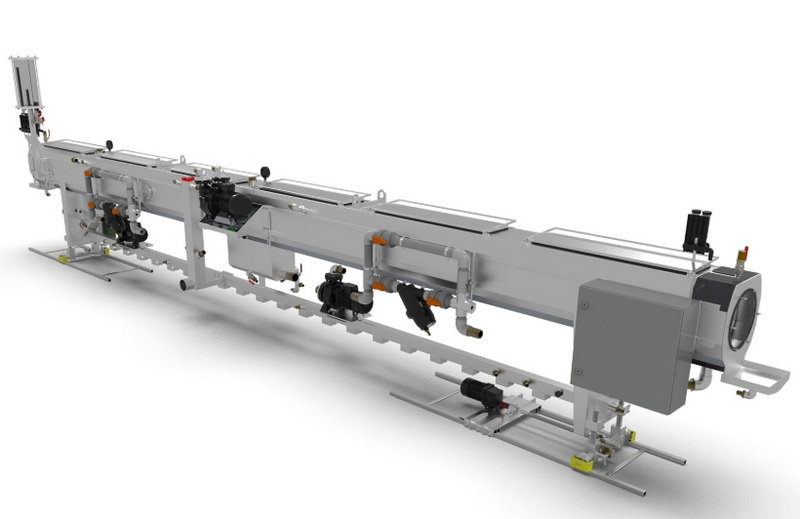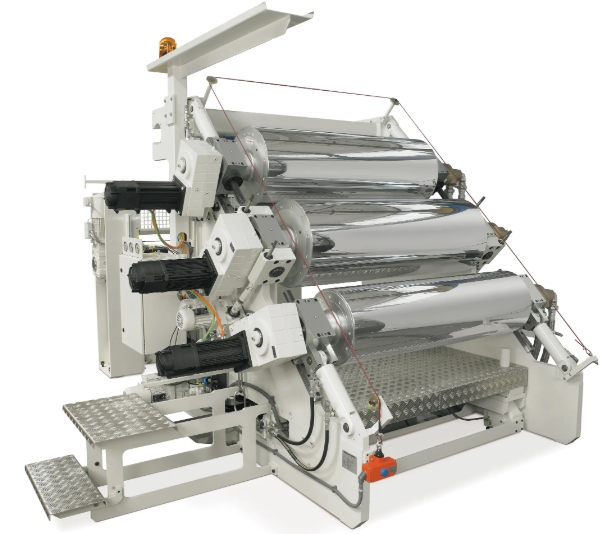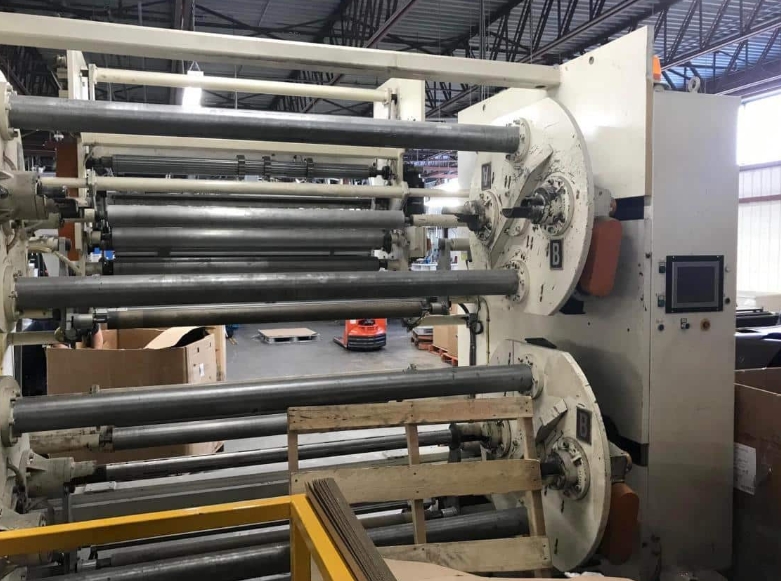Content Menu
● Introduction to Sheet Extrusion
● The Role of Downstream Equipment
● Types of Sheet Extrusion Downstream Equipment
>> Cooling and Calibrating Units
>> Haul-Off or Puller Units
>> Thickness Gauging and Control Systems
>> Surface Treatment and Embossing Machines
>> Cutting, Slitting, and Trimming Equipment
>> Winding, Stacking, and Take-Off Systems
>> Granulators and Scrap Reprocessing Units
● Key Functions and Benefits
● Applications Across Industries
● Factors Influencing Equipment Selection
● Integration and Automation in Modern Lines
● Challenges and Solutions in Downstream Processing
● Conclusion
● FAQ
>> 1. What are the main components of a sheet extrusion downstream line?
>> 2. How does downstream equipment improve sheet quality?
>> 3. Can downstream equipment be customized for different materials or products?
>> 4. What role does automation play in downstream processing?
>> 5. How is scrap material managed in sheet extrusion downstream lines?
Sheet extrusion is a cornerstone process in the plastics and materials industry, enabling the continuous production of flat plastic sheets for packaging, construction, automotive, electronics, and many other sectors. While the extrusion process itself is critical, the importance of sheet extrusion downstream equipment cannot be overstated. This suite of equipment is responsible for transforming the hot, freshly extruded sheet into a finished product with precise dimensions, surface quality, and mechanical properties. Understanding the functions, types, and advantages of sheet extrusion downstream equipment is essential for manufacturers seeking high-quality, consistent, and efficient production.

Introduction to Sheet Extrusion
Sheet extrusion is a continuous manufacturing process in which raw plastic materials are melted and pushed through a flat die to form a continuous sheet. The process starts with feeding plastic pellets or granules into an extruder. Inside the extruder, the material is heated, mixed, and pressurized before being forced through a die, which defines the width and thickness of the sheet.
However, the transformation from molten plastic to a finished, usable sheet does not end at the die. This is where sheet extrusion downstream equipment becomes indispensable, taking over to cool, shape, finish, inspect, and prepare the extruded sheet for its final application or further processing.
The Role of Downstream Equipment
Sheet extrusion downstream equipment refers to all machinery and systems positioned after the extrusion die in a production line. Its primary purpose is to process, finish, and handle the extruded sheet as it exits the die, ensuring that it meets strict quality and dimensional standards before being cut, wound, or otherwise prepared for shipping or further manufacturing steps.
This equipment performs several essential tasks:
- Cooling and solidifying the extruded sheet
- Calibrating and controlling thickness and width
- Surface finishing, texturing, or embossing
- Cutting or slitting to required dimensions
- Inspecting for quality control
- Collecting, winding, or stacking finished sheets
Without effective downstream equipment, even the best extrusion process can result in warped, uneven, or otherwise defective sheets, leading to material waste and production inefficiencies.
Types of Sheet Extrusion Downstream Equipment
Sheet extrusion downstream equipment encompasses a wide array of specialized machines and systems, each tailored to a particular stage of the post-extrusion process. The most common types include:
Cooling and Calibrating Units
After the plastic sheet emerges from the die, it is still hot and malleable. Cooling rolls or calibration tables rapidly bring the sheet to the desired temperature, solidifying its shape and ensuring consistent thickness and flatness. These units often use water or air cooling and may include precision rollers with variable speed control for optimal results.
Haul-Off or Puller Units
Haul-off equipment gently grips the sheet and pulls it through the downstream line at a controlled speed. This ensures consistent tension and helps maintain the desired thickness and surface quality. Modern haul-offs often feature servo or variable frequency drives for precise speed regulation.
Thickness Gauging and Control Systems
Inline thickness gauges use sensors to continuously monitor the sheet's thickness and width. These systems can provide feedback to adjust the die or roll gap automatically, ensuring the sheet remains within tight tolerances throughout production.
Surface Treatment and Embossing Machines
Depending on the end-use, sheets may require surface texturing, embossing, or coating. Embossing machines use patterned rollers to impart specific textures, while coating units can apply protective or decorative layers to enhance performance or appearance.
Cutting, Slitting, and Trimming Equipment
Once the sheet has been cooled and finished, it is cut or slit to the required dimensions. Cutting equipment ranges from rotary knives and guillotines to laser cutters for high-precision applications. Edge trim systems remove excess material, which can be collected for recycling.
Winding, Stacking, and Take-Off Systems
The final step involves collecting the finished sheet. Depending on the thickness and flexibility, sheets may be wound into rolls or stacked in flat sheets. Automated take-off systems ensure gentle handling to prevent damage and facilitate efficient packaging or transport.
Granulators and Scrap Reprocessing Units
To minimize material waste, edge trims and off-spec sheets are often fed into granulators, which reduce them to regrind material that can be reintroduced into the extrusion process.

Key Functions and Benefits
Sheet extrusion downstream equipment is designed to deliver several critical functions that directly impact product quality, production efficiency, and cost-effectiveness:
- Precision and Consistency: Advanced control systems and feedback loops ensure sheets are produced with uniform thickness, width, and surface quality.
- Enhanced Productivity: Automated downstream equipment reduces manual intervention, increases throughput, and minimizes downtime.
- Material Efficiency: Inline scrap collection and recycling systems help reduce waste and lower raw material costs.
- Quality Assurance: Inline inspection and measurement systems detect defects early, preventing defective products from reaching customers.
- Customization: Modular downstream setups allow manufacturers to tailor the line for specific products, materials, or customer requirements.
Applications Across Industries
Sheet extrusion downstream equipment is used in a vast range of industries, each with unique requirements for sheet properties and finishes:
- Packaging: Production of food containers, blister packs, and trays.
- Construction: Manufacturing of wall panels, roofing sheets, and insulation boards.
- Automotive: Production of interior trim, underbody panels, and protective covers.
- Electronics: Creation of insulating sheets and protective films.
- Signage and Display: Fabrication of advertising boards and display panels.
- Medical: Production of sterile packaging and device components.
Each application may require specific downstream equipment configurations, such as anti-static coating units for electronics or embossing machines for decorative panels.
Factors Influencing Equipment Selection
Choosing the right sheet extrusion downstream equipment involves considering several key factors:
- Material Type: Different polymers (such as PET, PVC, or PP) have unique cooling, handling, and finishing requirements.
- Sheet Dimensions: Desired thickness, width, and length dictate the size and capacity of downstream equipment.
- Production Speed: High-speed lines require robust, automated systems to keep pace without compromising quality.
- Product Tolerances: Applications with tight dimensional or surface quality requirements need advanced gauging and control systems.
- Integration Needs: Compatibility with upstream and downstream processes, including automation and data integration, is critical for modern manufacturing lines.
- Cost Efficiency: Equipment should balance upfront investment with long-term operating costs, maintenance, and flexibility for future product changes.
Integration and Automation in Modern Lines
The evolution of sheet extrusion downstream equipment has been marked by increasing automation and integration. Modern lines feature centralized control systems that synchronize the extruder, downstream equipment, and auxiliary systems. This integration enables:
- Real-time monitoring and adjustment of process parameters
- Automated quality control and defect rejection
- Seamless changeovers for different products or materials
- Data collection for process optimization and traceability
Automation not only improves efficiency but also enhances worker safety by reducing manual handling of hot or heavy materials.
Challenges and Solutions in Downstream Processing
Despite technological advances, sheet extrusion downstream processing faces several challenges:
- Maintaining Dimensional Stability: Variations in temperature, speed, or material properties can cause warping or uneven thickness. Precision control systems and advanced cooling units help mitigate these issues.
- Handling High-Volume Scrap: Efficient granulation and reprocessing systems are essential to manage edge trims and off-spec sheets without disrupting production.
- Product Changeovers: Flexible, modular downstream equipment allows for rapid changeovers, reducing downtime and increasing responsiveness to market demands.
- Quality Assurance: Inline inspection systems and automated defect rejection minimize the risk of defective products reaching customers.
Continuous innovation in downstream equipment design, including smarter controls and modular components, is helping manufacturers overcome these challenges and meet the evolving demands of the market.
Conclusion
Sheet extrusion downstream equipment forms the backbone of any successful sheet extrusion line. By cooling, calibrating, finishing, inspecting, and preparing extruded sheets, this equipment ensures that products meet the highest standards of quality and efficiency. As industries demand greater precision, customization, and sustainability, the role of advanced downstream equipment will only grow in importance. Investing in the right downstream solutions not only enhances product quality but also drives productivity, reduces waste, and positions manufacturers for long-term success.

FAQ
1. What are the main components of a sheet extrusion downstream line?
A typical sheet extrusion downstream line includes cooling and calibrating units, haul-off or puller systems, thickness gauging equipment, surface treatment or embossing machines, cutting and slitting devices, winding or stacking systems, and granulators for scrap reprocessing.
2. How does downstream equipment improve sheet quality?
Downstream equipment ensures consistent cooling, precise thickness control, surface finishing, and accurate cutting, all of which are essential for producing high-quality sheets that meet strict industry standards.
3. Can downstream equipment be customized for different materials or products?
Yes, most modern sheet extrusion downstream equipment is modular and can be customized or reconfigured to handle different polymers, sheet sizes, surface finishes, and production speeds.
4. What role does automation play in downstream processing?
Automation enhances efficiency, consistency, and safety by synchronizing all elements of the extrusion line, enabling real-time process adjustments, automated quality control, and rapid product changeovers.
5. How is scrap material managed in sheet extrusion downstream lines?
Edge trims and off-spec sheets are typically collected and fed into granulators, which reduce them to regrind material that can be recycled back into the extrusion process, minimizing waste and reducing raw material costs.






















